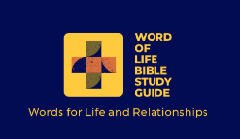MARK 3:1-6 MEDITATION - Part 1 THE MAN WITH THE WITHERED HAND
Introduction
This episode is the latest of a series of confrontations between Jesus and the religious leaders of the time that have taken place in these first chapters of Mark’s Gospel.
The major issue here is that of life and death. Within this broad issue there are three contrasting situations. The first of these is between Jesus and the Pharisees, which revolves around two different approaches to the Law. The second is between the man with the withered hand and the Pharisees, one has a withered hand and the others a withered heart. All are in need of healing. The third lies in the response to what the Father has to offer through Jesus; being receptive, in the case of the man with the withered hand, and unreceptive and hostile, as in the case of the Pharisees. All of this has to do with the overall issue of the choice each person has to make, that between life and death. The episode is therefore of universal application. Are we receptive or non-receptive to what God has to offer? Do we want or not want to establish a relationship with Christ, the source of life, with all that that entails of healing and well-being, a reversal of that process of fragmentation and distortion of our humanity to which we are all naturally subject due to the fall?
The Context
From the first chapter we see that Jesus has been drawing the crowds through his healing ministry. This was accompanied by his preaching of the Kingdom and revelation of his true identity. Some were open to his message others were not. The Scribes, who were present at the healing of the paralytic in chapter two (Mark 2:1-12), were shocked at Jesus declaring that he had the authority to forgive sins, authority that only God could have. Their objections and bewilderment, however, were not expressed. Later it was the Pharisees that lamented the fact that Jesus frequented the outcasts of society, the tax collectors and other people of low repute, sinners of all sorts (Mark 2:15-17). The people criticised his disciples for not fasting like the disciples of John (Mark 2:16-20). Finally, immediately before this episode, the Pharisees criticised his disciples for eating the grain in the fields on the Sabbath (Mark 2:23-28). From the healing of the paralytic onwards we can discern a clear picture of Jesus under strict observation. It would appear that they are even stalking him, following him wherever he goes, listening to every word he says, not in order to learn from him but to catch him out. The hostility of the religious leaders is in direct proportion to the increasing popularity of Jesus among the people and it becomes more and more explicit and aggressive. Jesus now decides to tackle their objections head-on.
It is the Sabbath and any kind of work was forbidden as is implied in verse 2: “And they watched Jesus to see whether he would heal him on the Sabbath, so that they might accuse him”. In the previous episode the Pharisees were observing the disciples as they were walking towards the synagogue through the fields of grain. They did so in order to catch the disciples doing something unlawful. They caught the disciples plucking corn on the Sabbath, a clear breach of the law in their eyes. It is here that the whole issue of what is or is not lawful on the Sabbath begins and the discussion with the Pharisees culminates in the now famous words: “The Sabbath was made for man, and not man for the Sabbath” and in the words which must have seemed to them blasphemous: “so the Son of Man is lord even of the Sabbath”(Mark 2:27, 28). This confrontation spills over into the episode now under consideration.
The close relation of the previous episode to this text is evident in the use of the conjunction ‘and’, linking chapters two and three. We should bear in mind that there were no divisions into chapters and verses in the original manuscripts. The division into two different chapters introduces a psychological break in the narrative whereas the conjunction has the effect of bringing chapters two and three together, thereby creating a continuous narrative. So the breach of the Sabbath laws at the end of chapter two is closely linked to this present episode of the healing of the man with the withered hand at the beginning of chapter three. The Pharisees, who had followed Jesus and his disciples through the fields on their way to the synagogue, are still observing Jesus and his disciples with a critical eye on that same Sabbath day:
they watched him, to see whether he would heal him on the sabbath, so that they might accuse him. (v. 2)
Just as the Scribes were present at the healing of the paralytic with a suspicious and critical attitude so are the Pharisees here now with that same frame of mind.
--------------------
Part 2 > > > Mark 3:1-6 Meditation continue to read > > >
Mark 3:1-6 Text and Questions
© copyright R W
bsgbiblestudyguide@gmail.com
